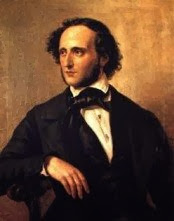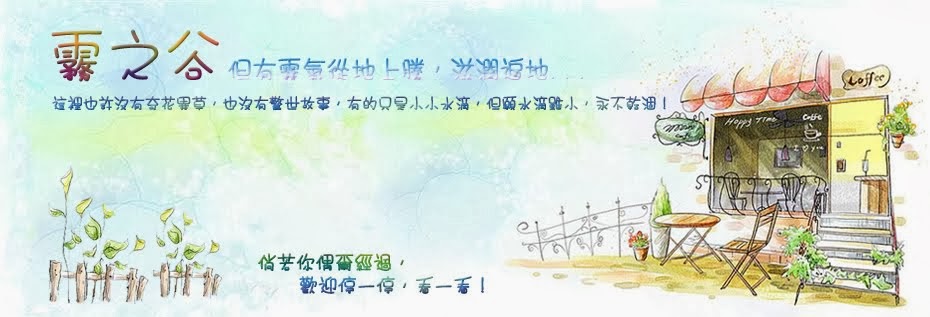今年是孟德爾遜的200歲壽辰,所以全港也有不少紀念他的音樂會,例如香港小交響樂團、香港聖樂團. . . ,今年都有舉辦他的紀念音樂會,慕慕今年已經聽了兩場,見另一篇網誌 — 「小交,繼續努力!」。

孟德爾遜 Felix Mendelssohn (1809-1847) 是浪漫時期的著名作曲家,少年時已是才華出眾,無論音樂、文學和繪畫都相當出色,十二歲時已認識當時已七十多歲的大文豪哥德 Goethe,甚至結成忘年之交,而音樂方面,不單只精通鋼琴和小提琴,九歲已作公開演奏,十二歲時寫成第一首綱琴四重奏;十六七歲時已達到創作上的巔峰,寫成《仲夏夜之夢》序曲,已是非常成熟的作品。因此常被視為繼莫扎特和貝多芬之後的音樂神童。
Lobgesang 是他的第二首交響曲,德文 Lobgesang 在英文是 Hymn of Praise 的意思,中文就是讚美頌歌!而慕慕曾 經就讀的香港國際音樂學校,今年的二十一週年音樂會 (27.6.2009) 也是選了孟德爾遜的這首《交響清唱劇》(Symphony-Cantata) – Mendelssohn Symphony No. 2 (Hymn of Praise) 作為主要曲目,當中結合了交響曲和清唱劇的曲式,前三個樂章是管弦樂的Sinfonia,之後加入聲樂部份十個樂章的清唱劇,清唱劇(Cantata) 就是環繞路德教派的一首 “聖咏” (chorale),發展出多個樂章,當中有獨唱和詩班合唱交織的一種大型合唱曲種。
說起清唱劇和孟德爾遜,雖然他是浪漫時期的作曲家,但其實他受巴洛克時期和古典時期的樂風影響頗深,其曲風幽雅、結構精密嚴謹、並以旋律優美著稱。此外,不得不提另一位巴洛克時期的音樂家巴赫 (J. S. Bach),巴赫一生忠心於教堂中事奉,每星期都為教堂彌撒寫一首清唱劇,全年絕無重覆,甚至寫了不只一個循環,寫成的清唱劇數目實在驚人,但可惜巴赫死後,他的作品已被世人忘懷且幾近絕跡。近一個世紀之後,才由孟德爾遜發掘出來,孟德爾遜不單只感興趣甚至驚為至寶,例如其中的《B小調彌撒曲》,《聖馬太受難曲》. . . 等等極為推崇,且不理會當時的權威人士反對,親自指揮作公開演出,把巴赫的偉大作品展示於世人面前,讓後世人得以重新認識這位百年難得一見的偉大作曲家。而孟德爾遜對巴赫的敬佩,甚至仿效他的曲式,寫成的《以利亞神曲》,與韓德爾的《彌賽亞神曲》和海頓的《創世記神曲》,合稱三大神曲。從其結構的精密、對位的細緻、旋律的優美,可見他盡得巴赫的精髓。
而這首交響清唱劇 — Hymn of Praise 就是以路德教派的一首聖咏《我們感謝我們的上帝》(Now Thank we all our God) 為基礎,發展成的一套清唱劇,當中更是結合了交響曲和清唱劇的特質,既有管弦樂的華麗,又有貝多芬《合唱》交響曲在終樂章加入人聲的聖詠形式,當中旋律優美動人,弦樂和聲樂互相配合,相得益彰。
All Man, all things,
all that has life and breath sing to the Lord.
凡有氣息的,都要讚美耶和華,你們要讚美耶和華!
全首作品就是以這個主題來貫穿整首交響清唱劇:
管弦樂的 Sinfonia 的第一句便是這個主題 all that has life and breath sing to the Lord,首先由長號奏出,隨即全個樂團作出回應,這個主題在合唱部份的第一樂章也會出現,並且在最後一個樂章,樂團和合唱團會再以這個主題來結束,首尾呼應。
管弦樂的Sinfonia之後,聲樂部份開始,由黑暗進入光明是合唱部份所傳遞的主要信息:
第一樂章:All Man, all things
由樂團奏起前奏的主題旋律引入合唱團,開始便是氣勢磅磚的宣告(歌詞來自聖經詩篇第150篇):凡有氣息的,都要讚美耶和華。
All Man, all things, all that has life and breath sing to the Lord. Hallelujah.
Praise the Lord with lute and harp, in joyful song extol Him.
And let all flesh magnify His might and His glory.
第二樂章:Praise Thou The Lord
第一樂章合唱團完結之後,立即直接引入第二樂章(也是孟德爾遜開創的樂章之間沒有停頓,一氣呵成的手法),(上面一段 video clip 的 5:43)女高音和合唱團(只有女聲)的對答呼應:我的心哪!你要稱頌耶和華!
Praise Thou The Lord, O my spirit,
and my inmost soul praise His great loving kindness.
第三樂章:Sing Ye Praise
充滿感情的男高音獨唱:被神救贖、安慰的人要向神發出讚美及感恩!
Sing ye praise, all ye redeemed of the Lord,
redeemed from the hand and foe,
from your distress, from deep affliction,
who sat in the shadow of death and darkness.
All ye that cry in trouble unto the Lord.
Sing ye praise! give ye thanks, proclaim aloud his goodness.
第四樂章:All Ye That Cried Unto The Lord
合唱團的回應(歌詞來自聖經詩篇第107篇):被神救贖、安慰的人要向神發出讚美及感恩!
All ye that cried unto the Lord.
He counteth all your sorrows in the time of need.
第五樂章:I waited for the Lord
由兩位女高音合唱的一首非常美的二重唱,中間也有合唱團和應(歌詞來自聖經詩篇第40篇,是大衛的詩): 耐性等候神的人是有福的!
I waited for the Lord, he inclined unto me, he heard my complaint.
O blessed are they that hope and trust in him.
第六樂章:The Sorrows of Death
男高音的獨唱(歌詞來自聖經詩篇第116篇):我們就像被死亡、痛苦纏繞,如同在黑夜中等候黎明,等候神的救贖把我們帶到光明中。
The sorrows of death had closed all around me,
and hell's dark terrors had got hold upon me,
with trouble and deep heaviness.
But, said the Lord, come, arise,
from the dead, and awake thou that sleepest,
I bring thee salvation.
第七樂章:The Night is Departing
第六樂章男高音獨唱完結之後,緊接著女高音只有一句的獨唱(上面一段 video clip 的 3:55)引入第七樂章的主題:宣告黑夜已過,白晝將近,調性也由陰暗的小調轉為明亮的大調,樂團再重覆此主題,接著合唱團男高音和男低音聲部唱出主題,然後四部一同唱出主題,再下去不同聲部會有不同的對位和賦格曲式的輪番出現第二主題,互相追逐 . . .
The night is departing, the day is approaching.
There for let us cast off the works of darkness,
and let us gird on the armour of light.
第八樂章:Let All Man Praise The Lord
整首 Cantata 就是由這首chorale – Now Thank we all our God 發展而來的。
所以在這個樂章的開始部份,合唱團也是以無伴奏的形式唱出第一段,就是在教堂中傳統聖詠的唱法,第二段才有樂團加入。
Let all man praise the Lord, In worhship lowly bending,
On His most holy word, redeemed from woe depending,
He gracious is, and just, From childhood us doth lead,
On Him we place our trust, and hope in time of need.
第九樂章:My Song Shall Be Always Thy Mercy
女高音和男高音的二重唱:歌頌神的慈愛及救贖。
My song shall be always thy mercy, singing thy praise, thou only God.
O God. My tongue ever speaks the goodness thou hast done unto me.
第十樂章:Ye Nations, Offer to the Lord
合唱團唱出終樂章(歌詞來自聖經詩篇第150篇):再次呼籲萬民萬族要將榮耀歸給神,並讚美祂!
Ye nations, offer to the Lord. Ye monarchs, offer to the Lord.
Thou hraven, offer to the Lord.
The whole earth offer to the Lord, glory and might, offer to the Lord.
O give thanks to the God, praise Him, all ye people,
and ever praise His Holy Name.
Sing ye the Lord, and ever praise His Holy Name.
All that has life and breath sing to the Lord. Hallelujah, sing to the Lord.
最後,樂團奏起主題旋律再現(上面一段 video clip 的 5:33)All that has life and breath sing to the Lord,合唱團作出堅定回應:All that has life and breath sing to the Lord, Hallelujah, sing to the Lord! 整首《交響清唱劇》便告結束。
願天地萬物,凡有氣息的,都來讚美神!!!

本月底,慕慕學校的合唱團便要演出孟德爾遜這首大型合唱作品了,實在引頸期待!
此文於2009年6月3日原刊載於Yahoo blog,於2013年10月搬家至此,以下是之前於Yahoo blog的回應。












沒有留言:
張貼留言